
ChatGPT Alternative Claude 2.1 Can Read a Whole Novel in One Prompt
Anthropic set out to be "different" from OpenAI by creating a "helpful, honest, and harmless"
2023-11-23 02:47

Bud Light scores mega deal to become the official beer of UFC
Bud Light might be experiencing a knockout of its own, but this time it's on purpose.
2023-10-25 20:17

From turkey sandwiches to casseroles: What to do with your Thanksgiving leftovers this year
Thanksgiving feasts are about to begin, but there’s one important thing to consider when the holiday is done: What do you do with all the leftovers? Thursday is just one day away and many Americans are already in planning mode, from buying the turkey to decorating their home for guests. While much of the work begins on Thanksgiving morning, with the fast-paced schedule of cooking dinner, perhaps an even bigger task is trying to finish all the servings of stuffing, turkey, green bean casserole, steamed vegetables, and pies that were leftover from Thanksgiving. Some people may opt to eat their leftovers separately, but why not combine all the Thanksgiving food to create an even bigger dish? Here are five fun meals you can create with your Thanksgiving leftovers this year. Turkey Soup The cold months are fast approaching, so a warm bowl of soup is perfect comfort food for the winter. Begin this dish by bringing your broth to a boil and adding in different seasonings, such as salt and pepper. Then, spice up your soup by adding some of your Thanksgiving leftovers. According to Martha Stewart, one simple recipe for turkey soup calls for eight cups of turkey stock – which can be made with turkey bones and water. Then add one and a half cups of shredded cooked turkey leftover from Thanksgiving, as well as leftover vegetables and seasonings used to cook for the holida - lemon wedges, chopped dill, three small carrots, salt, and pepper. The recipe also calls for one non-Thanksgiving-related ingredient: three dried wide egg noodles. After the stock has been seasoned, add the noodles and carrots and return the pot to a boil. Then reduce the heat and simmer until the carrots are “tender” and the noodles are “al dente”, which will take about four minutes. Stir in the cooked turkey and let it simmer for about a minute, before sprinkling dill and serving the soup with a lemon wedge on the side. Pot pies A beloved pot pie dish usually consists of meat cooked inside a flaky pastry. However, this pot pie doesn’t necessarily have to be filled with chicken or veggies, as you can instead make the savoury meal with the help of some leftovers. One recipe from Bon Appetit - called the “Leftover-Turkey Pot Pie” - includes a range of Thanksgiving foods, such as half a cup of leftover vegetables, one and one-half cups of cooked turkey, one and one-fourth cups of turkey gravy, and the optional cranberry sauce for serving. Other ingredients include one tablespoon of unsalted butter; one tablespoon of extra-virgin olive oil; one cup of chopped onion; six ounces of button mushrooms; kosher salt and freshly ground black pepper; one cup of thinly sliced, peeled carrots; one teaspoon of chopped fresh thyme; one-fourth cup of thawed, frozen green peas; one tablespoon of chopped, fresh Italian parsley; one large egg white; one nine-inch pie crust and all-purpose flour. For cooking, begin by putting one tablespoon of butter and one tablespoon of extra-virgin olive oil in a skillet over medium heat, before adding a cup of chopped onion. Cook for for seven minutes, before adding mushrooms with the stems trimmed and caps cup in half. Sprinkle some salt and pepper and stir for about four minutes. The recipe then calls for adding carrots to the skillet and covering it for two minutes. After that, add the leftover cooked vegetables, cooked turkey, turkey gravy, and thyme. As you bring the mixture to a boil, season it with salt and pepper and mix in the parsley and thawed green peas. Then pour the mixture into a glass pie dish and wait for it to cool, which will take about 30 minutes. For the next step, gently brush the rim of the pie dish with one large beaten egg and a teaspoon of water. Now that the filling has cooled down, add the pie crust to the top of the filling and fold the edges of the dough. As you preheat the oven to 400 degrees Fahrenheit, brush the top of the pie with the egg mixture. Then make three to four small slits in the centre before pressing parsley leaves onto the crust. The pie will bake for about 30 to 35 minutes. Casseroles A casserole, whether it’s filled with green beans or sweet potatoes, is a fan-favourite dish for Thanksgiving. But when the holiday is done, why not create your own casserole out of the stuffing and turkey that’s left in the fridge? The Pioneer Woman, also known as foodie Ree Drummond, has one receipe for a casserole called the “Thanksgiving Leftover Casserole”. Luckily, it allows for all the Thanksgiving leftovers to be used in one dish. The ingredients include four cups of stuffing, four cups of chopped turkey, one and one-half cups of green beans, one and one-half cups of gravy, three cups of mashed potatoes, one large egg yolk, one cup of shredded Monterey jack cheese, and cranberry sauce for serving. Before cooking the dish, begin by preheating the oven to 425 degrees Fahrenheit and buttering the bottom and sides of a 9-by-13-inch baking dish. Add the stuffing into the dish to create a crust for the casserole. From there, layer the turkey and green beans over the stuffing and pour the gravy on top. Combine the egg yolk and mashed potatoes into another bowl, and pour the mixture over the turkey. Once you’ve sprinkled cheese onto the dish, cover it with foil, place it on the third rack of the oven, and bake for about 20 minutes. Once 20 minutes have passed, uncover the dish and cook for another 20 to 25 minutes. After taking the dish out of the oven and letting it cool for 10 minutes, the casserole can be served with cranberry sauce. Sandwiches Whether it’s during a lunch break or at dinner with friends, any type of sandwich makes for a great meal. Instead of buying the lettuce and tomatoes for your usual sandwich, now you have the opportunity to turn your Thanksgiving leftovers into a delectable sandwich. In the recipe for Delish’s “Best Thanksgiving Sandwich” - which makes two sandwiches - the ingredients include two tablespoons of mayonnaise, one tablespoon of Dijon mustard, four slices of toasted sourdough bread, two cups of roasted turkey, half a cup of mashed potatoes, half a cup of cranberry sauce, half a cup of stuffing, one fourth cup of warmed gravy, and one fourth cup of baby spinach. To prepare the sandwich, begin by mixing mayo and mustard into a small bowl and spreading it on one side of the two pieces of bread. Add one cup of turkey, one-fourth cup of mashed potatoes, two tablespoons of cranberry sauce, and one-fourth cup of stuffing onto the bread slices. Finish off each sandwich with two tablespoons of gravy and spinach, before placing the second piece of bread on top - making the ultimate Thanksgiving sandwich. Quiches Although the savoury pastry is typically filled with cheese and meat, make the quiche your own with the help of Thanksgiving leftovers. According to the Food Network, one recipe calls for a nine-inch frozen pie shell. To make the quiche’s filling, assemble one cup of crumbled stuffing, one cup of chopped turkey, one cup of shredded sharp cheddar cheese, one-fourth cup of parsley leaves, kosher salt and pepper. For the custard in the dish, you’ll need one and one-fourth cups of half and half, three large eggs, one-fourth teaspoon of grated nutmeg, kosher salt, and ground black pepper. To make the quiche, begin by partially baking the empty pie shell without the filling - which you can do by following the directions on the package. Then, create your filling by sprinkling the turkey and stuffing into the pie shell, topping it off with parsley and cheddar. Next, season the dish with salt and pepper. For the custard, mix the half and half, nutmeg, salt, and pepper in one bowl. Finally, pour the mixture over the filling. Set the oven to 350 degrees Fahrenheit and let it bake for about 35 to 45 minutes. Give the quiche at least 30 minutes to cool, and serve! Read More Five delicious dishes to make using your Thanksgiving leftovers Can you make a Thanksgiving dinner in an air fryer? We tried it out Does turkey really make you tired? Best time to host Thanksgiving dinner How to decolonize your Thanksgiving dinner in observance of National day of Mourning Slandering mayonnaise doesn’t make you a foodie – it makes you boring Best wines to pair with Thanksgiving dinner
2023-11-23 05:45

A mother refused to do housework after husband said she does ‘nothing’ around the home. The results say it all
A mother has shared how she refused to do housework for a few days, after her husband made a comment about her doing “nothing” at home. The woman, Lindsay, posted a video to TikTok earlier this month about the remark her husband, Brian, made. “My husband made a comment that I do nothing around the house,” she wrote in the text over the footage, while looking at the camera. She then revealed how she responded to this comment, writing: “So for two days, I really did nothing around the house.” The short clip continued with Lindsay documenting what happened when she didn’t clean the home, as there were toys on the floor of her kitchen, as well as dirty dishes in the sink and on the counter. Lindsay then showed the papers all over her dining room table and a basket of dirty laundry next to her couch, which had a bunch of clothes on it. She ended her video with a picture of her bathroom, as it had clothes and towels on the floor. There was also a hair brush, straightener, bottle of mouthwash, and more skin products on the sink. In the caption, she added: “Then I left town for a girls trip…,” before poking fun at her relationship with a marriage humour hashtag. The video quickly went viral, as it has amassed more than 18.6m views. In the comments, many people criticised Brian for his remark and praised Lindsay for her reaction to it. “The way I would never do anything again,” one quipped, regarding how they’d respond to Lindsay’s partner. “I hope you had him clean it after the two days,” another added “Where the hell do they get all the audacity,” a third wrote, referring to the woman’s husband. Meanwhile, other people expressed their anger over the situation, with claims that Lindsay should have divorced her husband after what he’d said. @lindsaydonnelly2 Then I left town for a girls trip… #marriagehumor ♬ Karma (feat. Ice Spice) - Taylor Swift The next day, Lindsay shared a follow-up video, in which she had a chat with her husband. After recalling how she didn’t clean the house for a few days, Lindsay also noted that her husband has “since apologised”, She then revealed to Brian that she made that TikTok video about the situation and that it quickly went viral. She also told him about some of the comments on her initial clip, in viewers claimed that she should leave him. However, she then acknowledged that her Brian is “actually a really good husband”. “That was just a real a**hole move to say that,” she added, referring to Brain’s remark about her doing nothing around the house. In the caption, she also added that her partner realised that this was a “real s****y thing to say”. Speaking to People, Lindsay revealed that when she went on her “strike”, as she took a break from doing housework, she got some amusement out of the decision. “I went out with my girlfriends the night before I made the TikTok and I was telling them how I was literally doing nothing around the house and we were all kind of laughing about it,” she said. The mother added: “And then the next day, I’m getting ready to head out to a girl’s trip and the thought crossed my mind like, ‘I’m really just gonna leave the house like this.’ I felt so bad and it hit me that, wait, this is funny. This is a moment.” @lindsaydonnelly2 Replying to @kris he agreed that was a real ? thing to say ♬ original sound - Lindsay D As she recalled that “she was kind of pissed at my husband”, she noted that she had to make a shift to her daily routine. More specifically, in order to make sure that she wasn’t doing housework, she had to unmake her daughter’s bed. “[My daughter] was in there with me while I was making the bed,” she explained. “And then I stopped myself and said, ‘You know what?’ and unmade the bed. And she asked, ‘What are you doing?’ and I said, ‘Mommy’s not doing any housework.’” She emphasised that she has a “good relationship” with her partner, “even in [their] weak moments”. She also encouraged viewers to stop making comments on her content about getting a divorce. “It’s reality and comedy at the same time,” she added about her videos. “I really hope to make more content that resonates with people in a way that doesn’t make people think we should get a divorce.” The Independent has contacted Linsday for comment. Read More Mother sparks viral debate for ‘shaming’ parent who refused to give her daughter a slice of cake Husband sparks debate after refusing to leave wife’s baby shower when he was uninvited Woman sparks debate for refusing to be a bridesmaid in future sister-in-law’s wedding Daughter of Minnesota Twins manager wins hearts with ‘adorable’ press conference Jennifer Lopez says her 15-year-old twins have started to ‘challenge’ her Mother shares heartbreak after inviting whole school class to daughter’s party
2023-06-24 04:19

Man and pet dog both diagnosed with kidney cancer at same time
A father-of-three and his pet Labrador, both of whom were diagnosed with kidney cancer just months apart, are now enjoying what little time they have left together after the project manager’s cancer went into remission while his “best friend” only has a short time left to live. Simon O’Brien, 48, had already been crushed by the news that his eight-year-old golden lab, Bella, had just months to live after she was diagnosed with kidney cancer, when he discovered that he too was suffering from the condition in 2022. Both started experiencing similar symptoms, feeling constantly tired and thirsty, before scans revealed they had potentially lethal lumps on their kidneys, which were later diagnosed as cancer. Convinced his days were numbered, Simon visited the Marie Curie website to plan his own funeral and get his family affairs in order, even writing future letters for his three children, Ivy, 27, Callum, 18, and Niamh, 14, to open on big occasions. Thankfully, this proved to be unnecessary when he found out his cancer was in remission earlier this year after undergoing a seven-hour emergency surgery and having his kidney removed. The surgery is sadly too risky for Bella, who only has a short time to live, and so Simon is now making the most of what precious time they have left. “If you are not an animal person, then you probably don’t get it, but if you are are, then you understand,” said Simon, who lives with his wife Ruth in Aintree, Merseyside, and works as an IT project manager for NTT Data. “She is my best friend and is so much more than a dog to us, she is family. “It was like a bolt out of the blue and having two cancers in the family at the same time has been awful. “You are aware of the burden you put on others, even though they might not show it, you can see their worry and concern.” Alarm bells went off when Bella started losing weight, sleeping more and drinking lots of water in May 2022. “Bella was your typical, cliche Labrador – just a family dog, who is always happy and loves playing with children,” said Simon. “She was usually very prim and proper and groomed herself, but she had stopped and constantly had her tail between her legs, which was unusual, so we knew something was wrong.” The family took Bella to the vet, who referred her to a specialist animal hospital in Chester, where a scan confirmed she had terminal kidney cancer. “The vet said there was nothing they could do and she had months to live, and to enjoy our time left with her and make memories,” said Simon. “We’ll get her on some meds and make the most of the time you’ve got.” A few months later [October 2022], Simon, a keen half marathon runner and member of the Liverpool Running Club, started feeling exhausted after his routine training. “I was struggling to finish a training session with the guys and thought I must have really let myself go during the pandemic,” he said. “But then I found myself getting really tired and thirsty, and losing weight without wanting to.” Oblivious, he visited his GP and was referred to his local hospital for tests in November where a CT scan revealed a mass on his right kidney. He said: “(They) told me over the phone that they had found a mass on my right kidney, that they suspected it was cancer and that there was a chance it had spread to my lymph nodes. “At that point I was feeling pretty rubbish because I had continued to lose weight and was feeling very weak.” Simon and Ruth decided to break the devastating news to their children that same month. “Telling the kids was one of the hardest things, but we decided it was best to all go through it together,” he said. “Of course we played out the best-case scenario to them because they are only young. “Quietly to myself I was thinking, ‘Oh my god, I cant believe this, me and my poor dog. “At least I can get the op.” Fearing the worst, Simon launched into preparing his funeral and wrote a series of letters for future special occasions like his children’s big birthdays and weddings. “I was hoping for the best but planning for the worst,” he said. However, his cancer is now in remission after he underwent a seven-hour emergency operation at Royal Liverpool University Hospital to remove his kidney in December. “We only officially got the news last month,” he said. “Seeing the sense of relief on family and friends’ faces was very emotional – a real good feeling.” Sadly, the same cannot be said for Bella, whose cancer is terminal. Despite this, Bella, who is on £600 worth of medication a month, has lived far longer than was originally expected. “The medication is very expensive but has been amazing, and after a week or so we pretty much had her back,” Simon said. “The one thing we have kept going is taking her to the beach because she loves the waves, and for five or ten minutes she’ll forget everything and be a puppy again.” Simon, who stopped working after his diagnosis, heaped praise on his employer NTT Data, which has continued paying his salary throughout his ordeal. Determined to enjoy his time left with Bella he has since embarked on a Park Run challenge to raise money for Marie Curie, which supports terminally-ill people and their families at the end of life with care, information and support. “Everything on the Marie Curie website was in one place with support on finances, funerals, wills and all the practical information you need when you are in that situation,” he said. “It removed the worry and gave me all the information to protect my family’s future. “I wrote letters for my children and even planned my funeral songs. “It gave me peace of mind whereas my health was out of my control.” Dr Laura Chapman, medical director at the Marie Curie Liverpool Hospice, said: “This is such a sad situation, to have Simon and Bella diagnosed with the same type of cancer at the same time is something I have never heard of in my medical career. “The chances of a dog getting this relatively unusual cancer at the same time as her owner are around a million to one. It’s heartbreaking for the family who are now making cherished memories with Bella.” Matt Williams, associate director of information and support at Marie Curie, said: “I am glad that our website was there at a time when Simon needed it most. People with shock diagnosis often have nowhere to turn and need information fast. “So we have created a one-stop information hub to help people put their affairs in order and plan their funeral and finances when the worst happens.” To find help or support, visit the Marie Curie website at www.mariecurie.org.uk/help/support To find out more about Simon and Bella’s Park Run fundraising challenge, visit www.justgiving.com/page/si1of75. Read More Does sunscreen expire, what does SPF mean and which type is best? ‘Fearful’ Shannen Doherty shares devastating cancer update Cancer patients face worsening treatment delays due to lack of staff, finds report
2023-06-08 16:47

How to watch the 2023 Paris Masters online for free
TL;DR: Prime Video is hosting the 2023 Rolex Paris Masters. You can watch for free
2023-10-25 12:46

Dangerous heatwaves strike globe as wildfires rage
Scorching weather gripped three continents on Sunday, whipping up wildfires and threatening to topple temperature records as the dire consequences...
2023-07-16 23:54

Smucker is buying Twinkies maker Hostess for $5.6 billion
Hostess, the maker of Twinkies and Ho Hos, is being purchased by J.M. Smucker in a $5.6 billion deal.
2023-09-11 22:00

Connecticut kitten mystery solved, police say: Cat found in stolen, crashed car belongs to a suspect
Police who found a kitten in a stolen car say they have ascertained that the animal belongs to a juvenile suspect who was arrested after the car crashed
2023-08-18 08:56
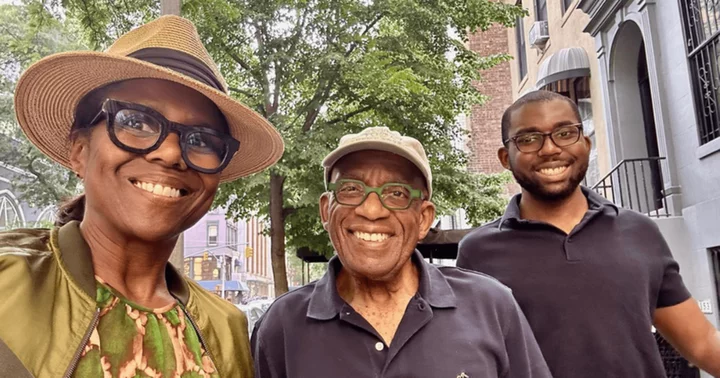
'Today' fans send best wishes to Al Roker's son Nick as NBC host and wife Deborah Roberts drop him off at college
Al Roker celebrated his 69th birthday over the weekend and later took his son back to college for his sophomore year
2023-08-21 17:53
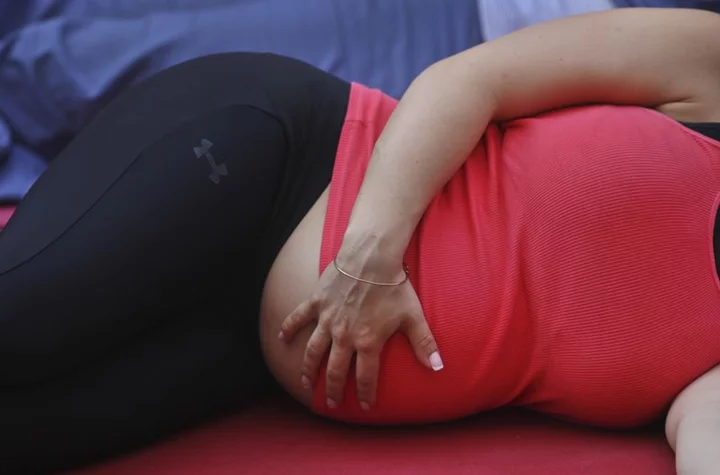
U.S. maternal mortality more than doubled since 1999, most deaths among Black women - study
By Nancy Lapid The number of U.S. women who died within a year after pregnancy more than doubled
2023-07-04 00:17

9 Nail Colors That Go With Everything, According To A Manicurist
You might think you’re a good decision-maker but no one would blame you for hesitating — even panicking — when faced with a nail color wheel at the salon. Should you go for Barbie pink or vanilla chrome? Milk bath nails or lip gloss nails? To be real, choosing the right shade is by no means the most difficult choice you’ll ever make but post-manicure regret is a thing and the abundance of hues can be a little daunting.
2023-07-07 01:26
You Might Like...

Get lifetime access to the best travel deals for under £50
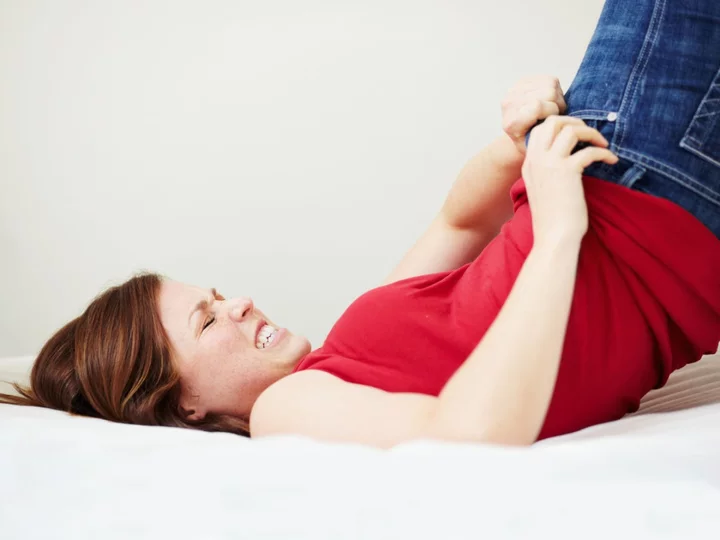
Jeans shopping is still a total nightmare
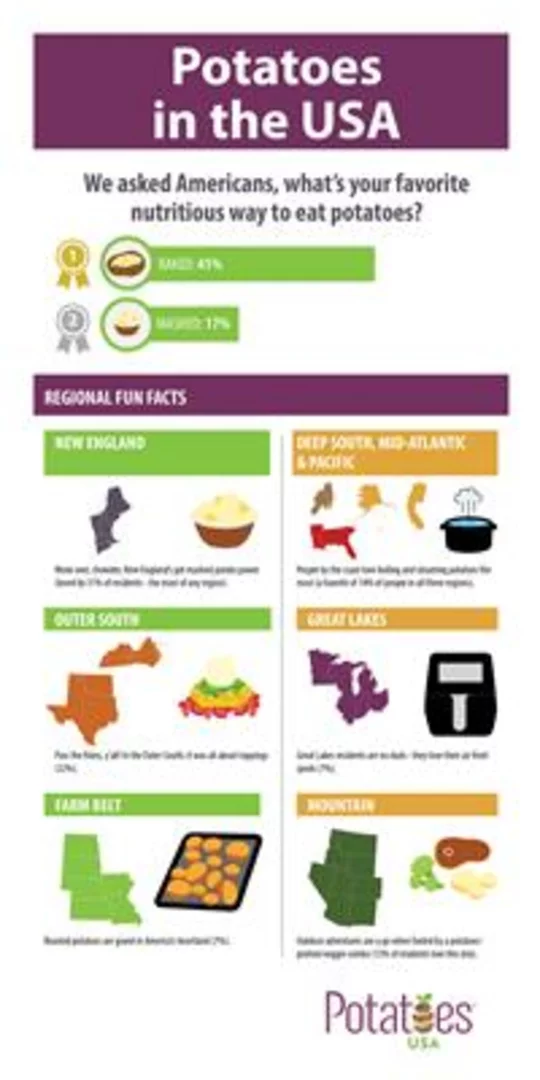
We Asked Americans, What’s Your Favorite Nutritious Way to Eat Potatoes?

Nebraska lawmakers to debate attaching 12-week abortion ban to trans youth health care ban

How to watch Washington vs. ASU without cable

Your Winter Holiday Travels May Finally Cost Less This Year
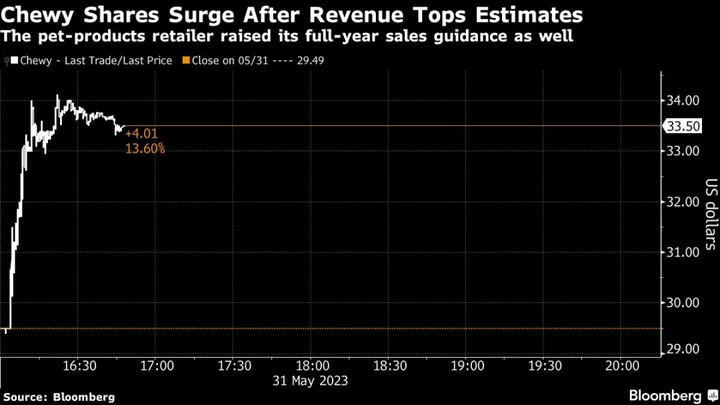
Pet Retailer Chewy Soars as Recurring-Purchase Program Drives Sales

Taylor Swift fans are solving Google's puzzles for hints about her new songs
